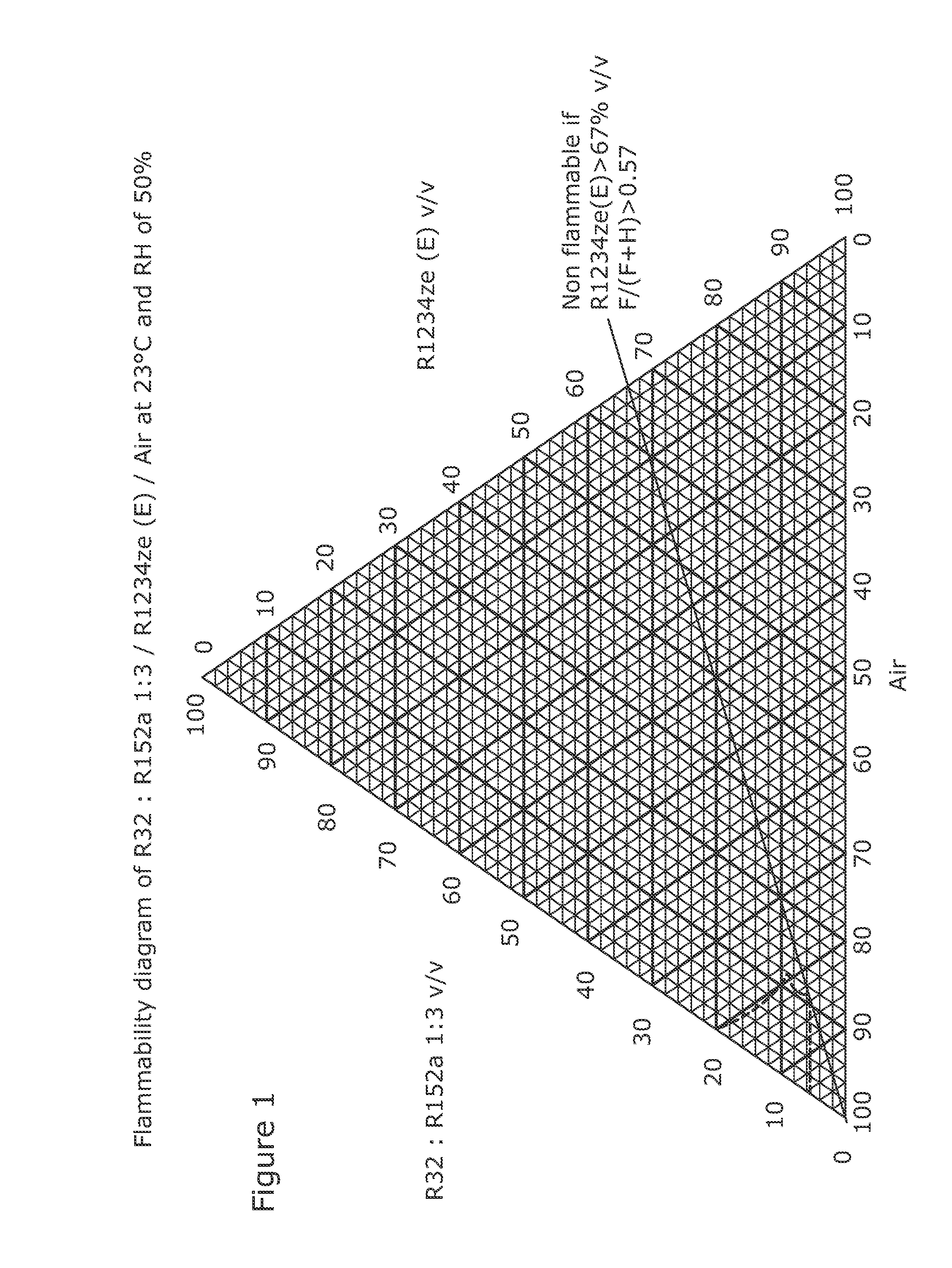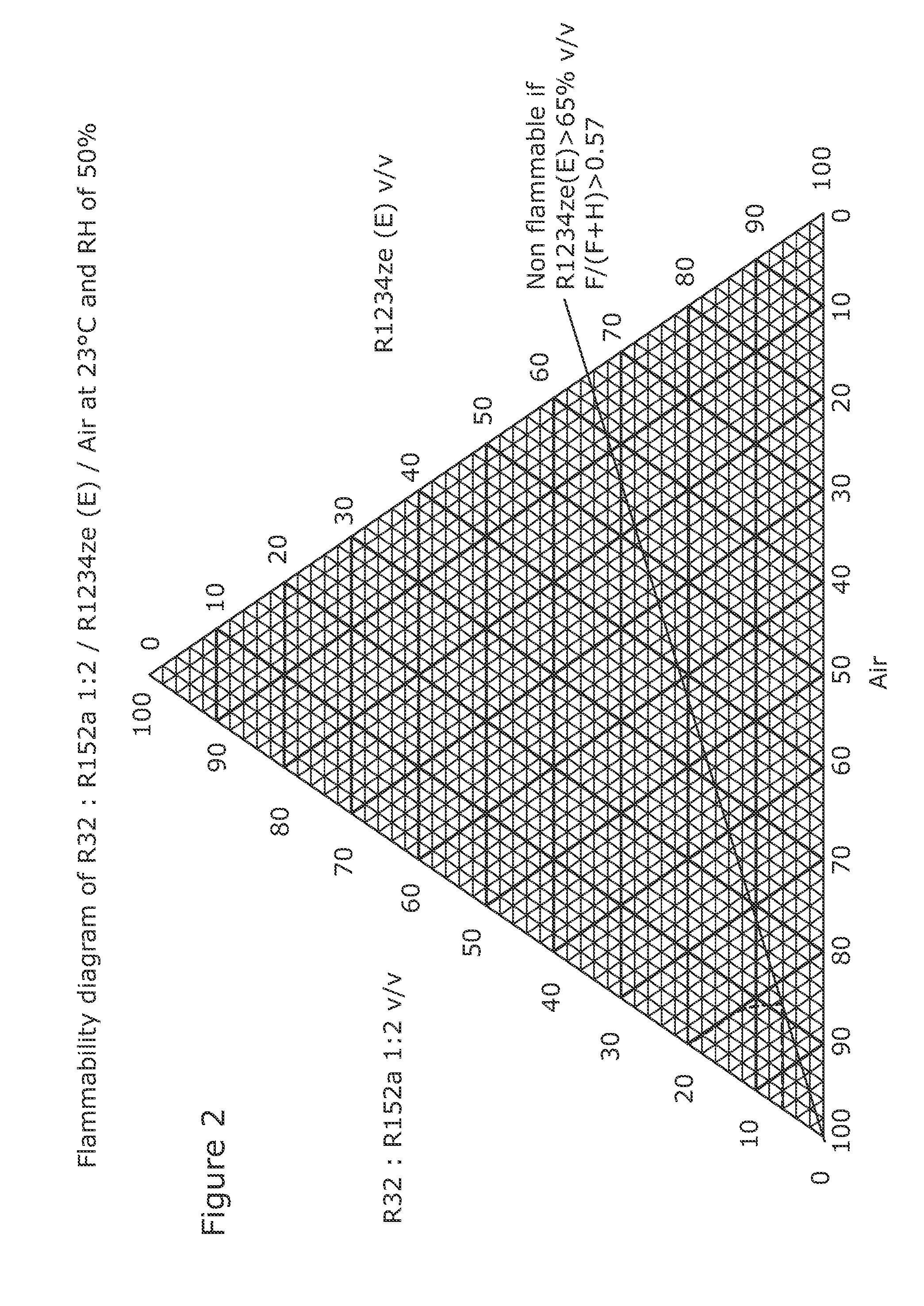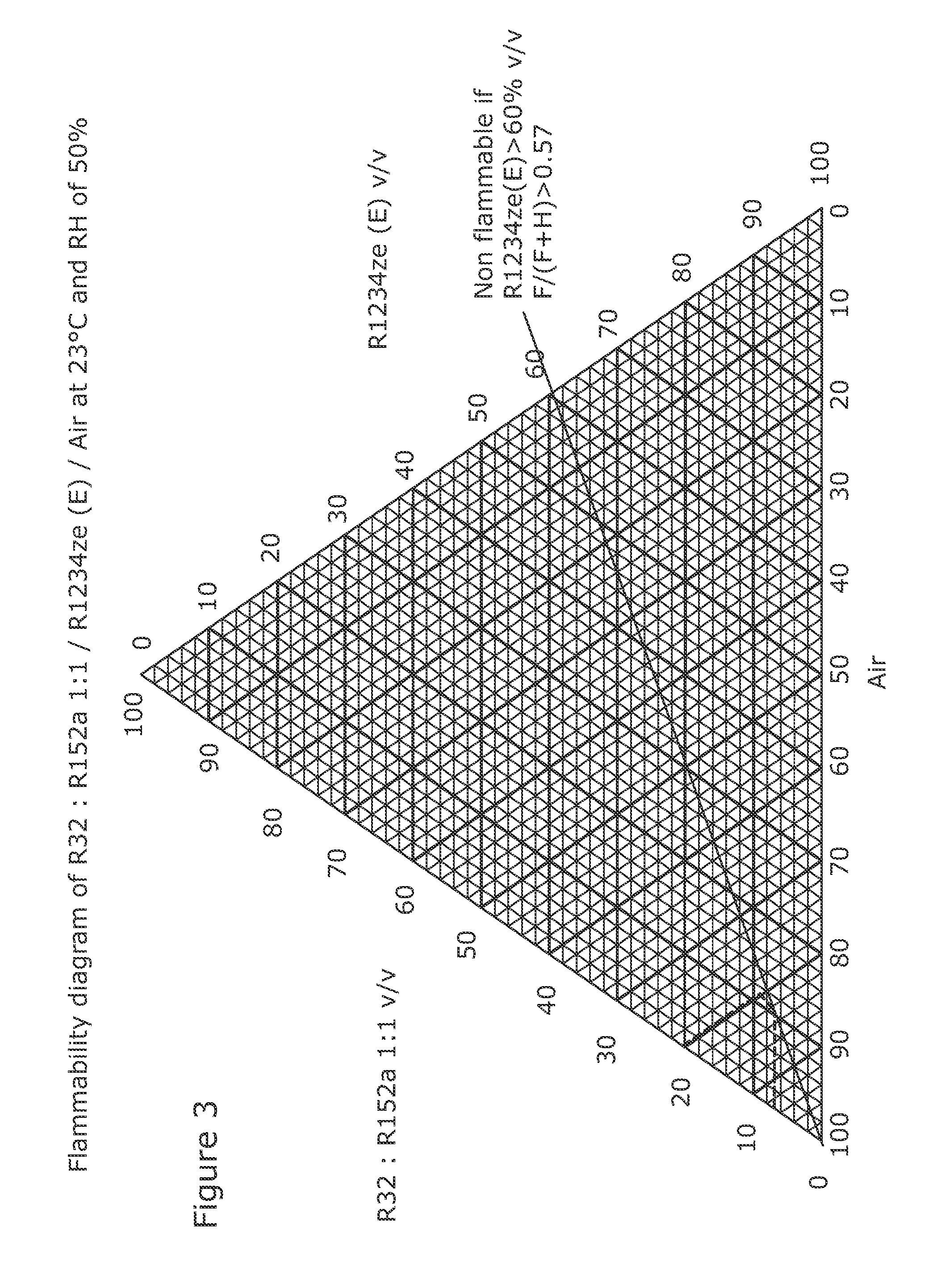Heat transfer compositions
a technology of heat transfer composition and composition, applied in the field of heat transfer composition, can solve the problems of excessive flammability of r-152a, reduced flammability, and reduced gwp, so as to reduce toxicity, reduce gwp, and acceptable flammability
- Summary
- Abstract
- Description
- Claims
- Application Information
AI Technical Summary
Benefits of technology
Problems solved by technology
Method used
Image
Examples
examples
Flammability
The flammability of certain compositions of the invention in air at atmospheric pressure and controlled humidity was studied in a test flask apparatus as described by the methodology of ASHRAE standard 34. The test temperature used was 23° C.; the humidity was controlled to be 50% relative to a standard temperature of 77° F. (25° C.). The diluent used was R-1234ze(E), which was found to be non flammable under these test conditions. The fuels used were mixtures of R-32 and R-152a. Three fuel compositions were tested and the molar proportion of R32 to R-152a was varied in each fuel. The three molar ratios of R32 to R-152a used were 1:1; 1:2 and 1:3. The fuel and diluent gases were subjected to vacuum purging of the cylinder to remove dissolved air or other inert gases prior to testing. The results of these tests are shown in FIGS. 1 to 3. In these triangular charts the vertices represent pure fuel, air and diluent. The flammable region was identified by varying the relativ...
PUM
 Login to View More
Login to View More Abstract
Description
Claims
Application Information
 Login to View More
Login to View More - R&D
- Intellectual Property
- Life Sciences
- Materials
- Tech Scout
- Unparalleled Data Quality
- Higher Quality Content
- 60% Fewer Hallucinations
Browse by: Latest US Patents, China's latest patents, Technical Efficacy Thesaurus, Application Domain, Technology Topic, Popular Technical Reports.
© 2025 PatSnap. All rights reserved.Legal|Privacy policy|Modern Slavery Act Transparency Statement|Sitemap|About US| Contact US: help@patsnap.com



